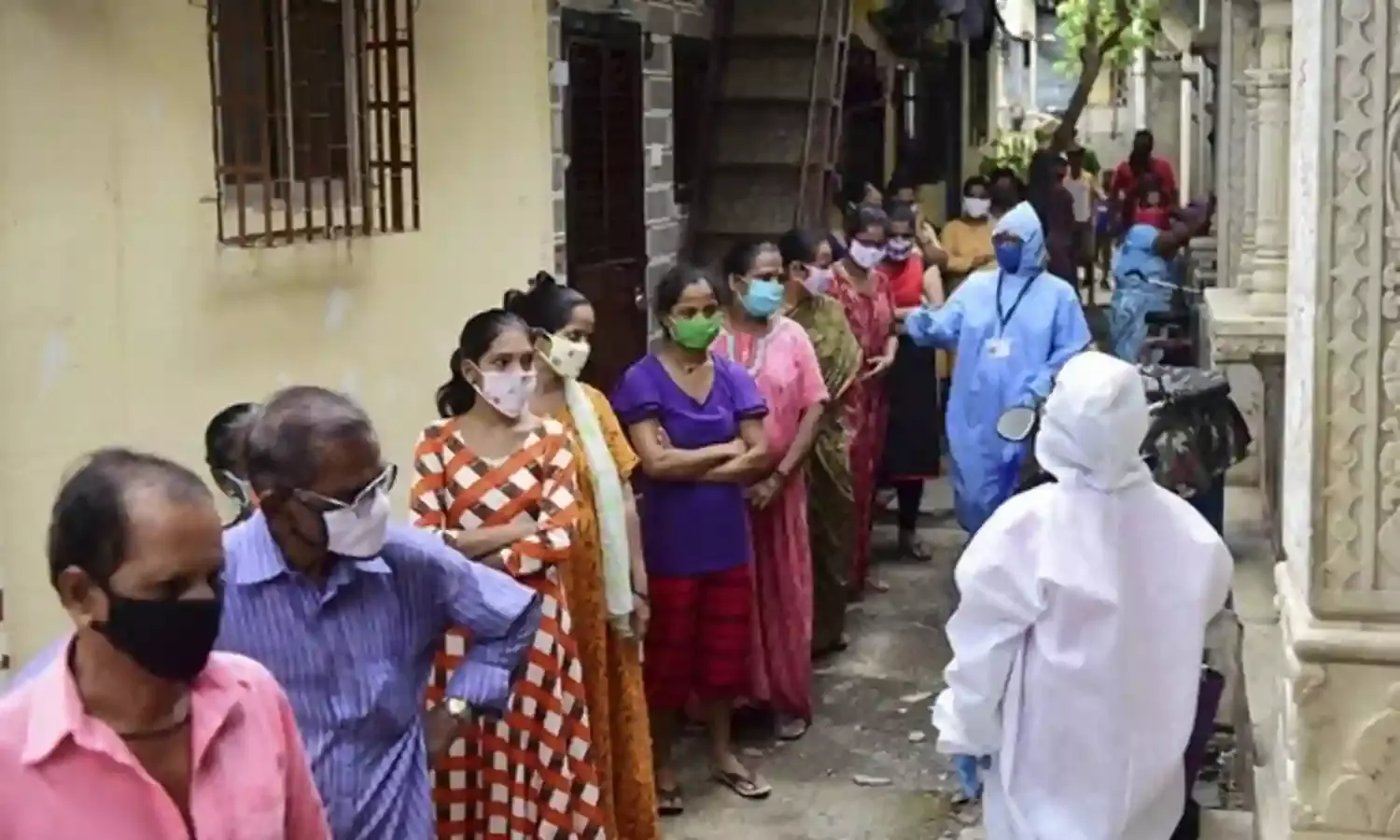ICMR Study: For Every Confirmed COVID Case, 82-130 Cases Went Undetected
Sero-prevalence survey

Results of the first national sero-prevalence survey, conducted by Indian Council of Medical Research (ICMR), estimates that India had 6.4 million COVID-19 cases by early May. However, the study also suggests that for every case confirmed by RT-PCR testing, 82 to 130 cases of COVID-19 went undetected.
The findings of the survey, conducted between May 11 to June 4, were published in the Indian Journal of Medical Research on September 10. The results state that 0.73% of Indian adults were exposed to SARS-CoV-2 by early May—findings that the ICMR had already made public in a press briefing back in June.
A sero-survey tests the blood serum for antibodies against the COVID-19 infection. The study tested individuals for IgG antibodies using the COVID Kavach ELISA kit, which is reportedly 92.4% sensitive and 97.9% specific.
Blood samples of 28,000 individuals across 700 clusters in 70 districts were tested. According to the report, around one-fourth of the surveyed clusters were from urban areas. Those samples that tested positive were retested using the Euroimmun SARS-CoV-2 ELISA.
“The findings of our survey indicated that the overall seroprevalence in India was low, with less than one per cent of the adult population exposed to SARS-CoV-2 by mid May 2020,” the report states. "The low prevalence observed in most districts indicates that India is in early phase of the epidemic and the majority of the Indian population is still susceptible to SARS-CoV-2 infection," it continues.
However, as Deccan Chronicle reported, if the lower limit of missed number of cases (80, as per the paper) were taken into account, as of September 12, India would have close to 372.8 million cases as opposed to the recorded caseload of 46.6 million.
ICMR mentions in its study that these missed cases (high infection to case ratio) in India could be on account of the “prioritization of testing among symptomatic” as per the testing criteria at the time. Mild and asymptomatic cases would therefore go undetected.
ICMR also listed “the variability in testing rates across the States” as a possible reason for missed cases. No community testing took place at the time. ICMR reportedly tested only those experiencing symptoms of severe respiratory infection and their contacts.
“A lot of missed cases would be asymptomatic cases without contact history. But there was also denial of testing in symptomatic for very long as a way of keeping counts low and being in unwarranted denial of community transmission,” the public health expert stated.
During the June 11 press briefing, ICMR researchers estimated the Infection Fatality Rate (IFR) to be 0.08 percent by early May. However, the survey results note: “Considering that the death reporting in India is incomplete, and differences in access to testing facilities across districts necessary for declaring the COVID-19 confirmed deaths, the present IFR is an underestimate.”
The missed cases would reportedly also include deaths due to COVID-19 that were attributed to other reasons.
“In deaths there was a systematic failure to record suspect deaths despite the rules. [There was] also a failure to admit sickest patients in search of testing and care. These seem to have been in rural areas too,” Sundararaman told The Citizen.
“India is known to have a very weak public health system and the performance and failure is consistent. Our ability at positive publicity for government achievement, lack of systems and respect for autonomous scientific data and opinion help cover up the enormity of our failures, but only upto a point,” he added.
According to the survey report, nearly half of the participants were aged between 18-45 years, out of which 51.5 percent were females. Individuals below 17 years were not tested. 18.7 percent of participants had an occupation with a high risk of exposure to potentially infected persons.
The results state that males, living in urban slums and with occupations that have a high risk of exposure were associated with seropositivity. The report estimates the seroprevalence to be between 0.62 and 1.03 percent across four district strata (zero, low, middle and high as per reported number of COVID-19 cases on April 25).
According to PTI, the survey outlined possible under-detection of COVID-19 cases in districts classified as those with zero cases. Researchers identified the reasons for this to be low testing and poor access to testing laboratories. In four of the 15 districts in the zero strata, COVID-19 testing laboratories were not available in district headquarters, requiring the samples to be transported over distances to state hospitals.
ICMR researchers highlighted: “The present findings of seropositivity in the strata of districts with zero to low incidence of COVID-19 cases underscores the need to strengthen surveillance and augment the testing of suspected cases in these areas.” The report estimates that the weighted prevalence of IgG antibodies was 0.47 percent in the stratum with zero reported cases and 0.48 percent in stratum with low incidence.
Researchers further concluded that to prevent overburdening the public health system there is a need to continue implementing “context-specific” containment measures—including testing all symptomatic individuals, isolating positive cases and tracing high-risk contacts to slow down transmission.
According to PTI, ICMR announced in July that a second nationwide sero-survey would be conducted to study the population’s exposure to the novel coronavirus, as a follow up to the survey conducted in May.



